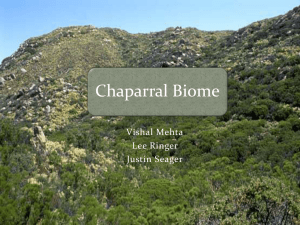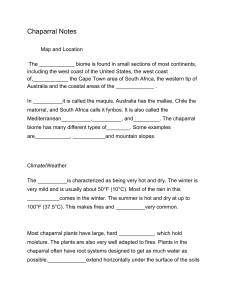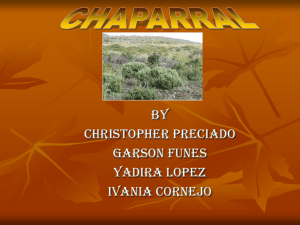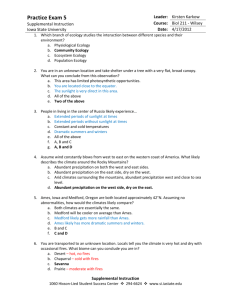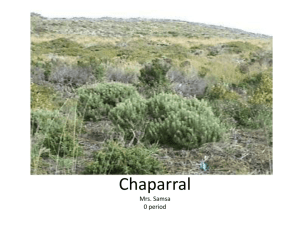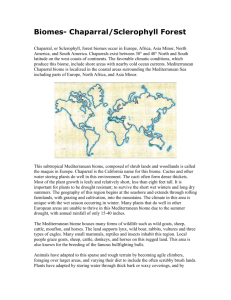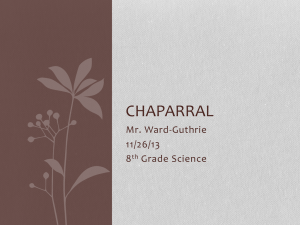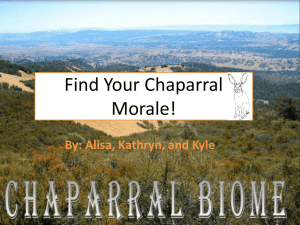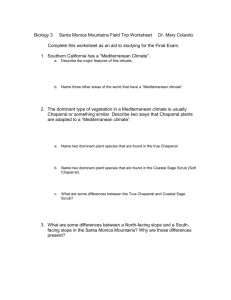Chaparral
advertisement
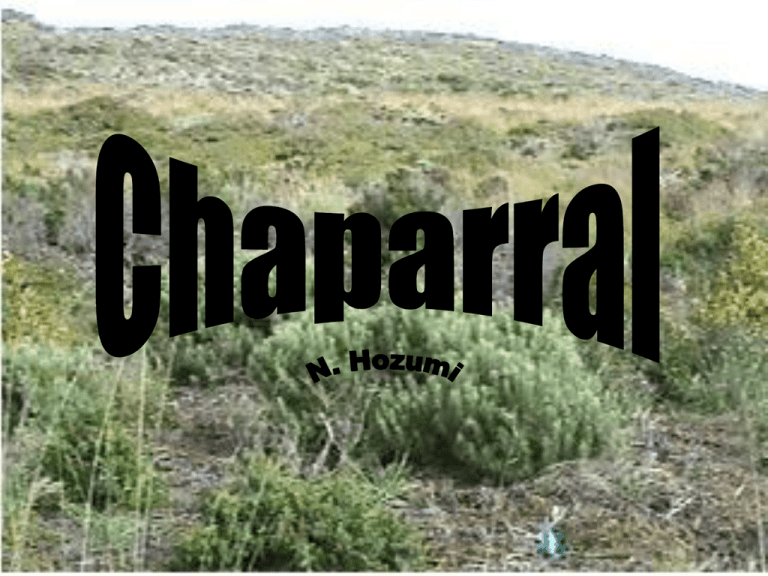
Temperature•Mild Winters- an average temp. of 10 degrees Celsius •Dry Summers- average temp. of 40 degrees Celsius Precipitation• 15-40 inches of rain per year •Most precipitation occurs in the winter Seasons• Chaparral has four seasons: Winter, Spring, Summer, Fall The 411 (continued) Limiting Factors•The lack of precipitation during the summer months •Droughts • Frequent Fires Species Diversity • The Chaparral biome is not very diverse in terms of plant and animal life. • Plants- most have small, hard leaves that are able to retain moisture – Poison oak, scrub oak, shrubs, trees, cacti • Animals- mostly grassland and desert types adapted to hot, dry weather •Jack rabbits, mule deer, praying mantis Example Food Chain Yucca Stink Beetle Gopher Snake Ground Squirrel Some Extra Info • The chaparral Biome is located on a little bit of most of the continents • Efforts to prevent naturally occurring fires often backfirecausing much more severe fires or mudslides c h a p a r r a l J. Kim Biome Project Quick Facts ALMOST A DESERT BUT NOT QUITE… Temperature Precipitation Annual Avg. 59° F < High 91.5° F > < Low 37° F > - Spring Avg 56° F - Summer Avg 71.7°F - Autumn Avg 64.75° F - Winter Avg 46°F Solar Insolation – Seasons Chaparrals have all four seasons although even though they are not as differentiated as in other regions Only 10-17 inches annually - Spring 2.2 in - Summer .2 in - Autumn 4.2 in - Winter 6.8 in Sunlight Primarily between 30 – 50 degrees latitude – just north of the Tropic of Cancer ( Because of the low shrubs that dominate this area, there is a lot of sunlight ) Plants & Animals -DIVERSITYflannelbush Western diamondback rattlesnake Texas horned lizard chamise (greasewood) ground snake leather oak wild goat chaparral buckbrush (California lilac) mouflon golden jackal Food Chain This is an example of a simple food chain in the chaparral. There are many different kinds of grasses which are consumed by grasshoppers. Then the grasshoppers are eaten by the horned lizards. These lizards are caught by predators such as hawks when they are basking in the sun. FIRE??? Chaparrals naturally burn every 30 to 40 years. These fires ravish the entire region, killing off many plants in the area. However, this is part of a natural life cycle for the biome, as from these ashes come the new beginnings.
